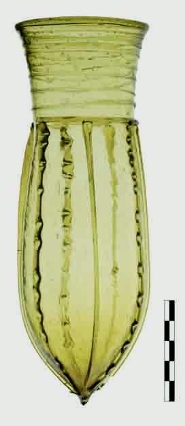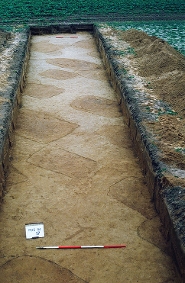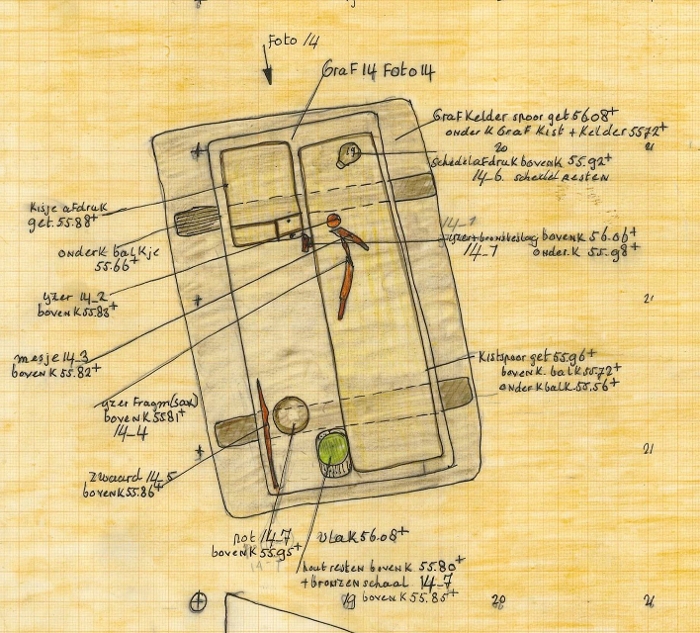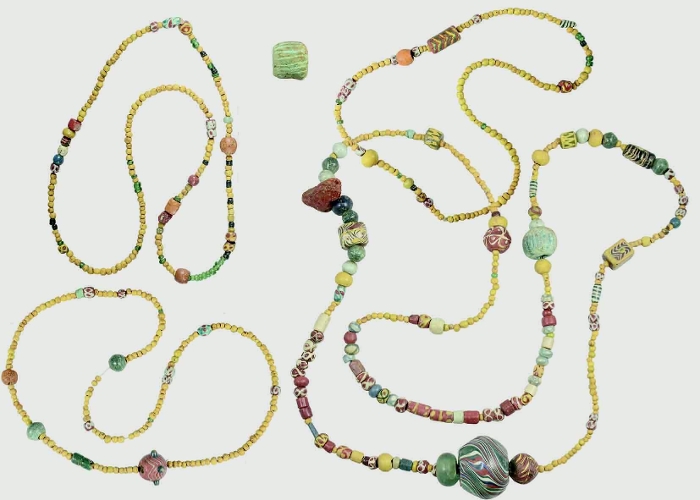Research project
The ANASTASIS project: Reviving Merovingian archaeology in the Netherlands
The goal of the ANASTASIS project is the analysis and publication of early medieval (Merovingian) cemeteries in the Netherlands (c. 500 – 750 AD).
- Duration
- 2009
- Contact
- Frans Theuws
- Funding
- National Science foundation (Odyssee-project 2009-2013)
- Nederlands Museum voor Anthropologie en Praehistorie
- Van Daalen Family
- Mondriaan Fonds
- Province of Limburg
- Municipality of Stein
- Town of Sittard-Geleen
- Partners
- Town of Nijmegen
- ARCHOL
- RAAP

ANASTASIS, the name of the project, meaning resurrection, derives from the title of the first major publication on Merovingian cemetery finds ever by J.J. Chiflet in 1655: Anastasis Childerici I Francorum Regis sive thesaurus sepulchralis (...). His publication came out only two years after the rich contents of the grave of king Childeric I (died: 481/482) was found in Tournai in Belgium.
We called the project Anastasis in order to contribute to a revival of Merovingian studies in the Netherlands and to add to a better understanding of early medieval Northern Gaul.
Why a project on cemeteries from the Merovingian period?

In the Netherlands we have quite a number of excavated but unpublished cemeteries from the Merovingian period. In the past it was impossible to cope with the vast amounts of evidence and the thousands of objects recovered from the graves. Conservation and restoration took a long time with the limited means available in those days. Moreover the number of archaeologists interested in this period was small. Even today we struggle with the innumerable and almost invisible, if not forgotten treasures in the archaeological depots.
The Netherlands is often a blank spot on the European maps concerning early medieval archaeology. In view of the high quality of the finds from Merovingian cemeteries we considered this an unacceptable situation. The project started with a research grant by the National Science Foundation in the context of a large national backlog programme, called Odyssee. We continued the work on the cemeteries after the formal end of this programme in 2013 with the help of finances provided by the University of Leiden and the generous sponsors of the project mentioned above.

New perspectives on medieval burial rites
The accent of the project is on publishing data from cemeteries. However we do this from new perspectives on early medieval burial rites. One of the consequences is that we deal with the objects and data of grave constructions in great detail. We also have a keen eye to the fragmentation of the objects, the reopening of graves and many other at first sight insignificant details that might provide interesting new insights into the ritual practices of those days.
With the detailed description and analyses of the cemetery evidence we not only hope to contribute to a better appreciation of the beautiful objects in museums and archaeological depots but also to highlight the early medieval past of the Netherlands and to contribute to the development of burial archaeology in Europe.

Parallel studies
Parallel to the publication of the data from cemeteries we study aspects of the Merovingian burial rites. Mirjam Kars studied the cultural aspects of dating systems in her dissertation as well as animal imagery on objects from graves, Martine van Haperen wrote a dissertation on grave re-openings, Frans Theuws continues his reflections on theoretical aspects of burial archaeology. In each volume we choose specific aspects of the burial ritual, which we highlight as a sort of pilot study, such as the deposition of vessels in graves, the location choice of cemeteries, the deposition of weapons and grave constructions.

Publications
Since 2012 we published the following volumes in the series Merovingian Archaeology of the Low Countries (Habelt Verlag, Bonn):
- Theuws, F./M. van Haperen, 2012: The Merovingian cemetery of Bergeijk-Fazantlaan, Bonn.
- De Haas, M./F. Theuws, 2013: The Merovingian cemetery of Posterholt-Achterste Voorst, Bonn.
- Kars, M./F. Theuws/M. de Haas, 2016: The Merovingian cemeteries of Sittard-Kemperkoul, Obbicht-Oude Molen and Stein-Groote Bongerd, Bonn.
In 2017 will be published:
F. Theuws/M. Kars (eds.), 2017: The Saint-Servatius complex in Maastricht. The Vrijthof excavations (1969-1970). Roman infrastructure – Merovingian cemetery – Carolingian cemetery – early town development, Bonn.
Cemeteries
At the moment we are working with various partners on the following cemeteries:
- Farmyard burials in the Southern Netherlands (Dommelen, Geldrop, Escharen, Venray, Sittard, Mierlo, Voerendaal) (F. Theuws)
- The cemetery of Gennep-Touwslagersgroes (F. Lippok/H. Hiddink)
- The cemetery of Oud-Leusden (M. van Haperen/M. de Haas)
- The cemetery of Lent-Lentseveld (Town of Nijmegen with our assistance)
- The cemetery of Uden-Schepersweg (ARCHOL with our assistance)
- The cemetery of Echt (RAAP, ARCHOL with our assistance)
